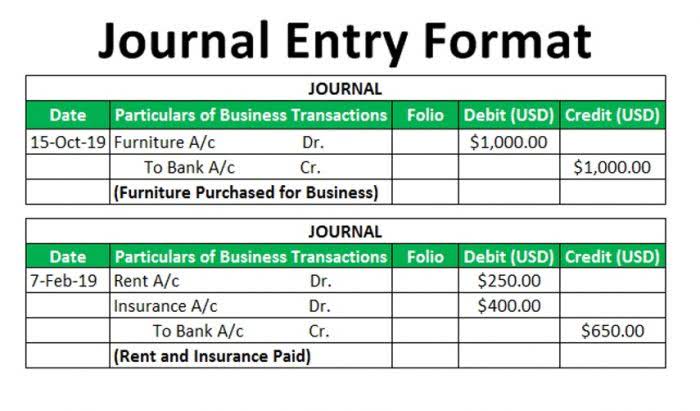Debits and Credits: In-Depth Explanation with Examples

Equity accounts, including Common Stock, Paid-in Capital in Excess of Par Value, and Retained Earnings, also have a natural credit balance. Liabilities also include amounts received in advance for a future sale or for a future service to be performed. An asset account in a bank’s general ledger that indicates the amounts owed by borrowers to the bank as of a given date. A temporary account to which the income statement accounts are closed. This account is then closed to the owner’s capital account or a corporation’s retained earnings account. This and other summary accounts can be thought of as a clearing account.
Cash Flow Statement
If the payment was made on June 1 for a future month (for example, July) the debit would go to the asset account Prepaid Rent. Revenues and gains are recorded in accounts such as Sales, Service Revenues, Interest Revenues (or Interest Income), and Gain on Sale of Assets. These accounts normally have credit balances that are increased with a credit entry.

What are debits and credits?
Generally, expenses are debited to a specific expense account and the normal balance of an expense account is a debit balance. In conclusion, having a solid grasp of accounts with CARES Act a normal credit balance is fundamental in the world of finance. It allows for accurate financial reporting and aids in making informed decisions based on reliable data.
- Losses result from the sale of an asset (other than inventory) for less than the amount shown on the company’s books.
- Generally, assets and expense accounts have a normal debit balance, while liability accounts, equity accounts, and revenue accounts have a normal credit balance.
- Some valuable items that cannot be measured and expressed in dollars include the company’s outstanding reputation, its customer base, the value of successful consumer brands, and its management team.
- A listing of the accounts available in the accounting system in which to record entries.
How are Contra Accounts Used and Reported?

If the customer purchased on credit, a sales allowance will involve a debit to Sales Allowances and a credit to Accounts Receivable. A balance on the right side (credit which is an example of an account that carries a normal credit balance? side) of an account in the general ledger. When inventory items are acquired or produced at varying costs, the company will need to make an assumption on how to flow the changing costs.

Accounts with a normal credit balance, such as accounts payable, loans payable, revenue accounts, owner’s equity accounts, and accumulated depreciation, impact financial statements in different ways. These accounts are crucial for presenting accurate information about a company’s liabilities, equity, revenue, and asset depreciation. Some specific examples of accounts with normal credit balances include accounts payable, loans payable, accrued expenses, retained earnings, and sales revenue. These accounts play a crucial role in proper financial reporting and decision-making. When a transaction is recorded, it is classified as either a credit or a debit based on the account affected.
- The accumulated depreciation account has a credit balance and is used to reduce the carrying value of the equipment.
- This means that, in these accounts, credits increase the balance, while debits decrease it.
- Net purchases is the amount of purchases minus purchases returns, purchases allowances, and purchases discounts.
- Since expenses are usually increasing, think “debit” when expenses are incurred.
- Accounts receivable is rarely reported on the balance sheet at its net amount.
Optimizing Accounting Reserve Account Management Strategies
- A credit balance in Accounts Payable indicates the amount owed to vendors, which is a normal and expected scenario.
- Overall, maintaining normal credit balances provides financial stability, accurate reporting, and effective management of liabilities, equity, and revenue.
- Others use the word to signify a net amount, such as income from operations (revenues minus expenses in the company’s main operating activities).
- Double Entry Bookkeeping is here to provide you with free online information to help you learn and understand bookkeeping and introductory accounting.
- Contra-expense accounts, such as Purchases Discounts and Purchases Returns and Allowances, also have a credit balance that allows the company to report both the gross and net amounts.
Accounts Receivable is an asset account and is increased with a debit; Service Revenues is increased with a credit. To decrease an account you do the opposite of what was done to increase the account. It is important to note that the terms “credit” and “debit” do not have the same meaning as in everyday usage. In accounting, a credit does not necessarily denote an increase or a positive transaction, nor does a debit signify a decrease or a negative transaction. Instead, they indicate the direction in which the transaction affects the account’s balance.
- Equity accounts, including Common Stock, Paid-in Capital in Excess of Par Value, and Retained Earnings, also have a natural credit balance.
- It is essential to note that the presentation of accounts on the financial statements may vary depending on the accounting framework or reporting standards followed by the company.
- It will contain the date, the account name and amount to be debited, and the account name and amount to be credited.
- If the employee was part of the manufacturing process, the salary would end up being part of the cost of the products that were manufactured.
- Instead, they indicate the direction in which the transaction affects the account’s balance.
- When such accounts increase, they are credited, and when they decrease, they are debited.
- As a contra revenue account, sales discount will have a debit balance and is subtracted from sales (along with sales returns and allowances) to arrive at net sales.
Net purchases is the amount of purchases minus purchases returns, purchases allowances, and purchases discounts. You might think of G – I – R – L – S when recalling the accounts that are increased with a credit. You might think of D – E – A – L when recalling the accounts that are increased with a debit. Expert guide to accounting reserve account management & fund allocation strategies for businesses, optimizing financial efficiency & growth. For the past 52 years, Harold Averkamp (CPA, MBA) hasworked as an accounting supervisor, manager, consultant, university instructor, and innovator in teaching accounting online.

Understanding Credit Balances
Revenue accounts like Sales Revenues and Interest Revenues also have credit balances, which represent the income earned by the company. For example, a sales account would have a normal credit balance if a business sells products or services to customers. Accounts receivable is rarely reported on Catch Up Bookkeeping the balance sheet at its net amount.
